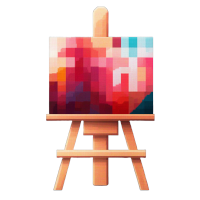Blog
Welcome to our blog. Stay tuned for interesting articles!
Categories
Mix Colors Like Jan van Eyck
A practical, historically grounded guide to Jan van Eyck’s luminous oil palette and glazing workflow, with safe modern equivalents and exact mixing ratios.
October 18, 2025tutorialscolor mixinghistorical palettesMix Colors Like Cennino Cennini
A practical, historically grounded guide to recreating Cennino Cennini’s late‑medieval egg tempera palette on panel. Beginner‑friendly recipes, period‑correct materials, and a clear step‑by‑step workflow informed by verdaccio underpainting—with optional modern, safe substitutes listed separately.
October 16, 2025tutorialscolor mixinghistorical palettesImpasto Painting Technique - Complete Guide for Oil Artists
Master the impasto painting technique with our comprehensive guide. Learn what impasto means in art, explore impasto mediums like Liquin Impasto and impasto gel, discover famous impasto artists, and get step-by-step tutorials for impasto oil painting. Perfect for beginners and advanced artists looking to create textured impasto artwork using palette knives and thick paint application methods.
July 02, 2025techniques advancedOil Painting Techniques - Alla Prima
Immerse yourself in the vibrant world of alla prima oil painting, where creativity flows freely and artistry comes alive with each brushstroke. This direct painting approach invites you to bypass traditional methods, igniting spontaneity and boldness as you capture the essence of your subject in real-time. In our article, you’ll discover essential techniques like the direct painting method and wet-on-wet blending, empowering you to create stunning works full of depth and emotion. Whether you're a seasoned artist looking to refine your craft or a beginner eager to learn, our direct painting tutorial will enhance your skills and inspire your creative journey. Join us as we unravel the secrets of alla prima, revealing how to transform your artistic vision into captivating expressions on canvas—and uncover the exciting surprises that await when you let your colors mingle.
December 21, 2024techniques advancedOil Painting Techniques - Glazing
Unlock the transformative power of oil painting glazing techniques and watch your artworks radiate with depth and luminosity! This comprehensive glazing tutorial invites artists of all skill levels to explore the enchanting world of layering translucent colors. By mastering these techniques, you can breathe life into your canvases, creating sophisticated visual narratives that captivate the viewer’s eye. The article delves into the nuances of pigment selection and application methods, providing valuable insights that encourage experimentation and growth in your artistic practice. As you refine your skills, you’ll discover how to manipulate light and shadow in ways that elevate your work to striking new heights. Prepare for an exhilarating journey into glazing—a pathway that could redefine your artistic expression. What secrets await you in the layers of color and light?
December 21, 2024techniques advanced
